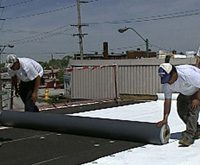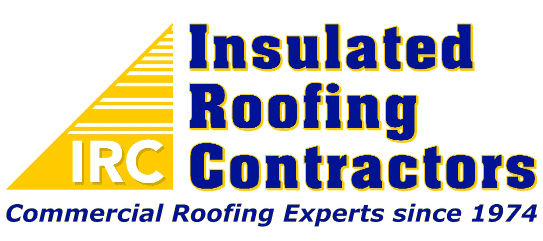DO YOU KNOW THE TIME, ENERGY, AND MONEY YOUR COMMERCIAL ROOFING INSTALLATION WILL REQUIRE?
Every commercial roofing system gets installed differently than the next. There is not one general installation method as there might be for asphalt shingles in residential use. Depending on the material and system you choose, the installation method, duration, pricing, and difficulty can vary greatly from one another. Let’s look at some of the commercial roofing systems available, and what the installation process looks like for each of them.
Sprayed Polyurethane Foam Installation
One of the simpler commercial roofing installations is sprayed polyurethane foam. This is typically a three-plus step process to install. The current roofing surface (could be new construction or added on to an existing roof) is power washed and all debris is removed from the roof.
After the roof is cleaned, the foam is sprayed directly onto the roof surface. This process can be lengthy if the roof is large or has a lot of protrusions. Each protrusion takes more time and attention, so it adds to the overall installation time.
Once the foam has been installed, it must somehow be protected from the elements, specifically the sun. This is usually accomplished by coating the foam with a silicone or acrylic roof coating, which reflects UV rays and protects the foam.
That’s it, three steps to install a sprayed polyurethane foam roof. Obviously, if there are repairs or other concerns arise, there will be more steps in the process, but in general, the installation process for SPF is very simple.
Single-Ply Installation

Single-ply commercial roofing installation is also a fairly straightforward process, and many single-ply materials are installed in a similar manner. Generally, single-ply commercial roofing installation requires fewer steps than most other methods, but is often more difficult and time-consuming to get through the process.
The first step is to roll out the material. Nearly all single-ply roofing materials come in rolls that are to be rolled out over the roofing surface. These can be as small as 2-3’ wide rolls, and as large as 1‘ wide rolls. The wider the roll, the fewer seams in the roof, which means fewer opportunities for leaks.
Once the material is rolled out, it must somehow be adhered to the roof. This can be done with glues, tapes, or the application of heat (when using thermoplastic materials). This is where the main variations in installation occur; depending on the material, the adhesion method can change from one roof to the next.
Whether the material is being glued, taped, heated, or another method is used to adhere the roofing system, single-ply installations remain fairly consistent with one another. Roll out the material, attach the material to the roof deck and to itself, done.
Restoration Coatings Installation
Probably the easiest commercial roofing installation process belongs to that of restoration coatings (AKA spray-allied coatings, AKA roof coatings). Restoration coatings are not a stand-alone roofing system, but are a coating designed to be applied to an existing roofing surface. They extend the life of the current roofing system, but they cannot be installed on their own.
The typical process for the of restoration coatings commercial roofing installation is two-steps, but again, this can always change if repairs, modifications or primers are required on the roof.
Step one is to power wash the roof surface and clear it of all debris and foreign matter. If the roof isn’t completely clean, the coating won’t properly adhere to the roof and this will lead to coating failure.
Step two is to spray apply the roof coating to the freshly cleaned roof surface. The coating is applied in a very thin layer on top of the existing roof surface, and once the coating dries, the process is complete.
Restoration coatings are typically a two-step process, but some roof surfaces require primers, need to be cleaned extra thoroughly, or have repairs that need to be made. In each of these situations, the installation process will require more time and more steps.
Conclusion
There are many other commercial roofing installation methods that vary with the material chosen. However, single-ply, restoration coatings and SPF are three roofing systems we are extremely familiar with. If you have questions about any of the materials discussed above, or questions about materials and installation processes we didn’t cover, shoot us an email or give us a call.
